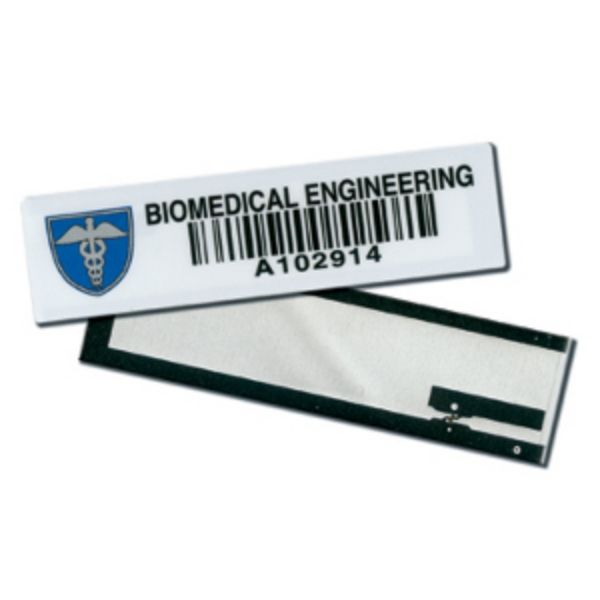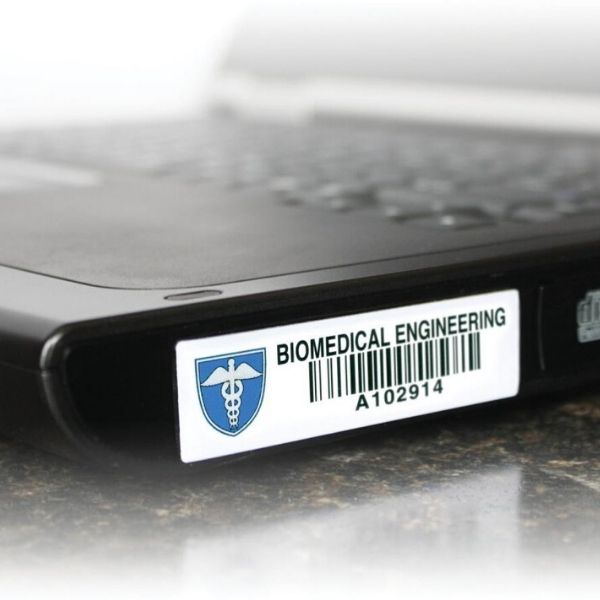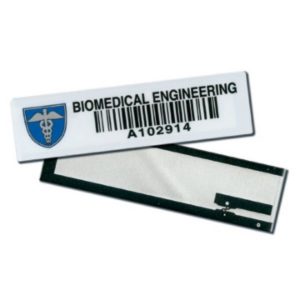Project Description
The only thing “mini” about this tag is its size!
With a smaller footprint and lower profile than the original Universal RFID Asset Tag, the Universal Mini RFID Asset Tag easily fits in smaller places and on assets where other tags may be too large.
Developed using the same premise as our original Universal RFID Asset Tag, the smaller tag utilizes a patented inlay design and passive RFID technology to obtain incredible read ranges on a variety of different materials – metal, plastic, even wood. And customer programming matches the printed bar code information for two tracking technologies.
Smaller footprint and lower profile while still achieving excellent read range sets this product apart from others
Patented inlay design obtains excellent read ranges regardless of surface – metal, plastic, even wood
Subsurface printing on durable polyester protects printed copy against moderate solvents and caustics/acids
Barcode
Data Matrix
QR Code
RFID
Serial Number
Text
Abrasion Resistance
Chemical Resistance
Heat Resistance
Audio / Visual
Inventory
Restoration
Theater
Theme parks
Wineries / Breweries
Hospitals
IT Assets
Manufacturing
Schools
-
Chemical Testing
-
Temperature Testing
-
Read Range Testing
Chemical Test Summary
The Universal Mini tags were attached to a sheet of glass submerged in various chemicals for a 3 week period.
Observations were made at the following intervals: 2 hours, 24 hours, 1 week, 2 weeks, and 3 weeks. A Motorola
handheld RFID reader as well as a handheld barcode reader were used to test the samples.
Chemical Test Data
| Length of immersion |
Water | Glass Cleaner | Bathroom Cleaner | Isopropyl alcohol 99% |
Acetone | NaOH pH 12.0 | HNO3 pH 1.0 | Brake Fluid |
| 2 hours | no effect | no effect | no effect | no effect | no effect | no effect | no effect | no effect |
| 24 hours | no effect | no effect | no effect | no effect | no effect | no effect | no effect | no effect |
| 1 week | no effect | no effect | RFID tag read with difficulty (significantly lower hits/second) | no read | Tag structure weakened | Tag detatched | no effect | no effect |
| 2 weeks | no effect | RFID tag read wtih diffuculty (significantly lower hits/second) | RFID tag read wtih diffuculty (significantly lower hits/second) |
no read | no read | tag detached | no read | no effect |
| 3 weeks | tag peeled easily | tag peeled easily | no read; tag peeled easily | no read; tag peeled easily | no read | tag detached | no read; tag peeled easily | no effect |
High-temperature resistance test - These tags were attached to a sheet of glass at raised temperatures for 10
minutes. Tags were then removed from the oven and tested for readability immediately. Low-temperature resistance
test - The Universal Mini tags were attached to a sheet of glass at low temperatures outdoors. Tags were then
checked for readability with a Motorola handheld RFID reader. Tags survived and were readable for 19 hours in
extreme winter conditions with temperatures between -29 to -32°C with no signs of failure.
Temperature Test Data
| Temperature | RFID read test (immediately out of oven) | Appearance of tags |
| 52°C | Reads well | No change |
| 57°C | Reads well | No change |
| 63°C | Reads well | No change |
| 74°C | Reads well | Slight curling at edge |
| 85°C | Reads well | Slight curling at edge |
| 96°C | Reads well | Slight curling at edge |
| 107°C | Reads well | Severe curling at edge - tag discolored |
| 121°C | Test failed | Tag destroyed |
Read Range Test Summary
Read Range Test Data
Universal Mini Anechoic Chamber Results
| Sample | Metal | Plastic | Cardboard | Wood | Glass |
| Average | 4.0 meters | 2.0 meters | 1.8 meters | 3.0 meters | 4.0 meters |




